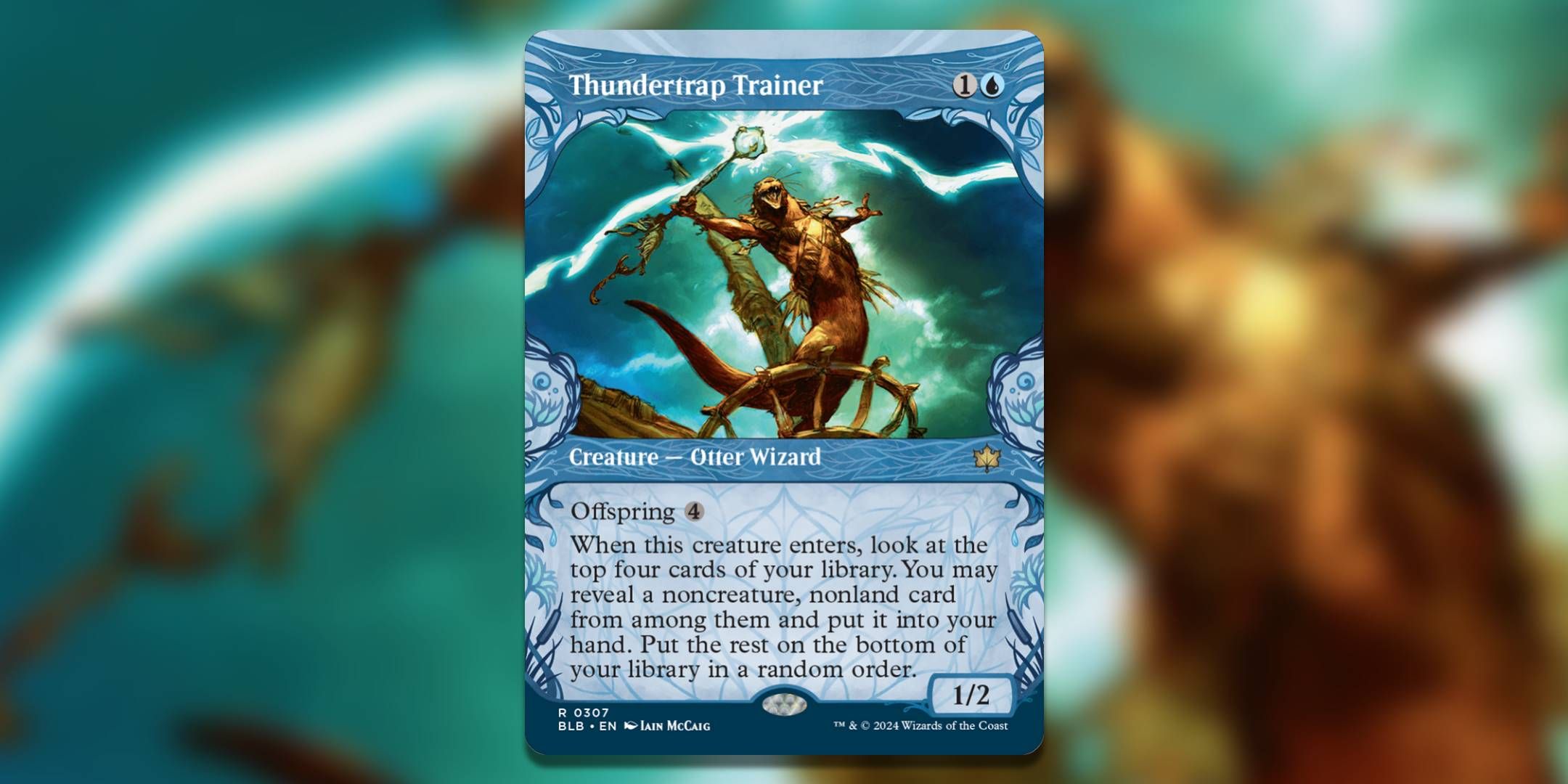One of the most rewarding strategies in Magic: The Gathering is executing a powerful combo. A well-known combination in the Modern format features the card Splinter Twin, which was so impactful that it faced an eight-year ban.
Splinter Twin can fit into multiple color schemes but is predominantly used in Izzet (red/blue) decks. Whether you’re interested in crafting a Splinter Twin deck or if you simply want to learn more about how the combo functions—along with ways to counter it—you’re in the right spot.
Sample Decklist
Decks built around Splinter Twin are combo-centric, but to achieve consistent wins, you must include methods for locating your combo pieces as well as protecting them.
|
Creatures (15) |
|||
|---|---|---|---|
|
Deceiver Exarch (4) |
Pestermite (2) |
Snapcaster Mage (4) |
Tamiyo, Inquisitive Student // Tamiyo, Seasoned Scholar (1) |
|
Thundertrap Trainer (4) |
|||
|
Instants (16) |
|||
|
Counterspell (2) |
Flame of Anor (3) |
Flare of Denial (4) |
Lightning Bolt (4) |
|
Sink into Stupor // Soporific Springs (2) |
Spell Pierce (1) |
||
|
Sorceries (7) |
|||
|
Expressive Iteration (1) |
Lórien Revealed (2) |
Preordain (4) |
|
|
Enchantments (4) |
|||
|
Splinter Twin (4) |
|||
|
Lands (18) |
|||
|
Arid Mesa (4) |
Flooded Strand (2) |
Island (2) |
Mountain (2) |
|
Scalding Tarn (4) |
Steam Vents (2) |
Thundering Falls (2) |
|
|
Sideboard (15) |
|||
|
Consign to Memory (2) |
Force of Negation (2) |
Harbinger of the Seas (2) |
Meltdown (2) |
|
Mystical Dispute (1) |
Pyroclasm (2) |
Spell Snare (2) |
Stern Scolding (2) |
Key Cards
Splinter Twin
The centerpiece of the deck, Splinter Twin, is a Modern staple. This Aura is placed on a creature to allow that creature to tap and create a copy of itself. The new creature has haste and must be exiled at the end of the turn, but it keeps the name, types, and abilities of the original creature.
Splinter Twin is a great toolbox card since it enables you to duplicate abilities that activate when a creature enters the battlefield, attacks, or blocks. This allows you to gain value from your board without exposing your key creature. However, its most critical role is as a component of a combo.
When used on a creature with the ability to untap itself, Splinter Twin enables an infinite creature combo, overwhelming your opponent with a seemingly endless flood of new creatures. A variety of creatures can participate in this combo within the Modern format, allowing for different deck designs.
Deceiver Exarch
Deceiver Exarch is the most frequently targeted creature for the Splinter Twin combo. This 1/4 creature has flash and, when it enters the battlefield, can tap one of your opponent’s permanents or untap one of your own for three mana (two generic and one blue).
It shares the spotlight with two other common combo cards: Pestermite, a 2/1 flying Faerie with the same cost and a slightly more flexible tap/untap ability, and Fear of Missing Out, a 2/3 red Nightmare that untaps a creature when it attacks for the first time each turn and only costs two mana.
Although Pestermite’s flying ability might appear advantageous, evasion is less significant when you have numerous attackers that your opponent can’t block. While you can utilize Fear of Missing Out in a mono-red Splinter Twin deck, it lacks flash, meaning it has to remain in play longer, giving your opponent more chances to eliminate it. Plus, both other creatures can be taken out by Lightning Bolt, which Deceiver Exarch does not fear.
Snapcaster Mage
Snapcaster Mage is incredibly useful for recurring your instants and sorceries, allowing you to replay them from the graveyard. This versatility helps you reuse Counterspells, Lightning Bolts, and any needed control or removal spells without having to search for them again.
Because of its utility, Snapcaster Mage is also a prime target for a spare Splinter Twin. By enchanting it with Splinter Twin while cards like Preordain, Expressive Iteration, and Flame of Anor are in the graveyard, you can search for essential combo pieces while using Lórien Revealed for additional draws instead of only searching for an Island.
Strategy for Splinter Twin Deck
As with any combo deck, the primary goal of Splinter Twin decks is to line up all your combo pieces and execute the combo to win, either by forcing your opponent to concede or continually using the combo until you reduce their life to zero.
This sample decklist doesn’t feature mana acceleration, which isn’t a concern since the mana curve caps at four for Splinter Twin, ideally allowing for a quick win as soon as it hits the board. While there are only eight lands producing mana (ten if you count Sink into Stupor // Soporific Springs), you do have twelve methods to search out the lands and thin your deck.
Lórien Revealed allows you to draw three cards at sorcery speed for five mana, making it your most expensive card and not a worthwhile investment unless the game has extended for too long. Utilize its islandcycling feature to discard it and fetch an Island to replace it, ideally at the end of your opponent’s turn.
If your initial hand contains four lands that produce mana, Splinter Twin, and Deceiver Exarch, you’re in a great position! Just hold on until turn four. If not, play your fetch lands and Lórien Revealed to locate the lands you require while thinning your deck, ensuring that you draw other needed cards instead of extra lands.
Thundertrap Trainer, Expressive Iteration, and Preordain all assist in digging for your essential combo pieces. Thundertrap Trainer offers extra versatility: like Snapcaster Mage, it’s also an effective target for a spare Splinter Twin, as it can help you tap while searching through the top four cards for a combo piece or a reaction to a troubling spell.
Even without Splinter Twin, Snapcaster Mage and Thundertrap Trainer serve as great sacrifices for Flare of Denial, a three-mana counterspell that can be played for free if you sacrifice a non-token blue creature. It’s ideal to keep it for when you find yourself tapped out, as your opponent may try to sneak their combo pieces or removal in that moment.
Other Options
Splinter Twin can also pair with Fear of Missing Out, either as an alternative to Deceiver Exarch and Pestermite or as the central combo piece in a mono-red Splinter Twin deck. While this construction may lead to a quicker deck, it does forfeit blue’s control mechanisms.
Moreover, Fear of Missing Out is restricted by the fact that only one copy can attack at a time since the untap ability is used on the initial enchanted copy. An indestructible blocker halts the strategy, along with the necessity of achieving delirium.
Tamiyo, Inquisitive Student is a one-drop that can safely block flying creatures with her three toughness, generate a Clue token for later card draw, and has a valuable counter for mirror matches: her first loyalty ability turns your opponent’s Deceiver Exarchs into 0/4 creatures, preventing defeat through combat damage.
Having a second Tamiyo in the deck or sideboard is a smart move if you anticipate facing other Splinter Twin strategies, providing you a significant edge.
Mishra’s Bauble is an essential cantrip: for zero mana, you can check your opponent’s next card and draw one yourself. Each Bauble effectively reduces the card count in your deck, increasing the likelihood of drawing the cards you need each turn. Additionally, it can help trigger delirium if you are running Fear of Missing Out.














